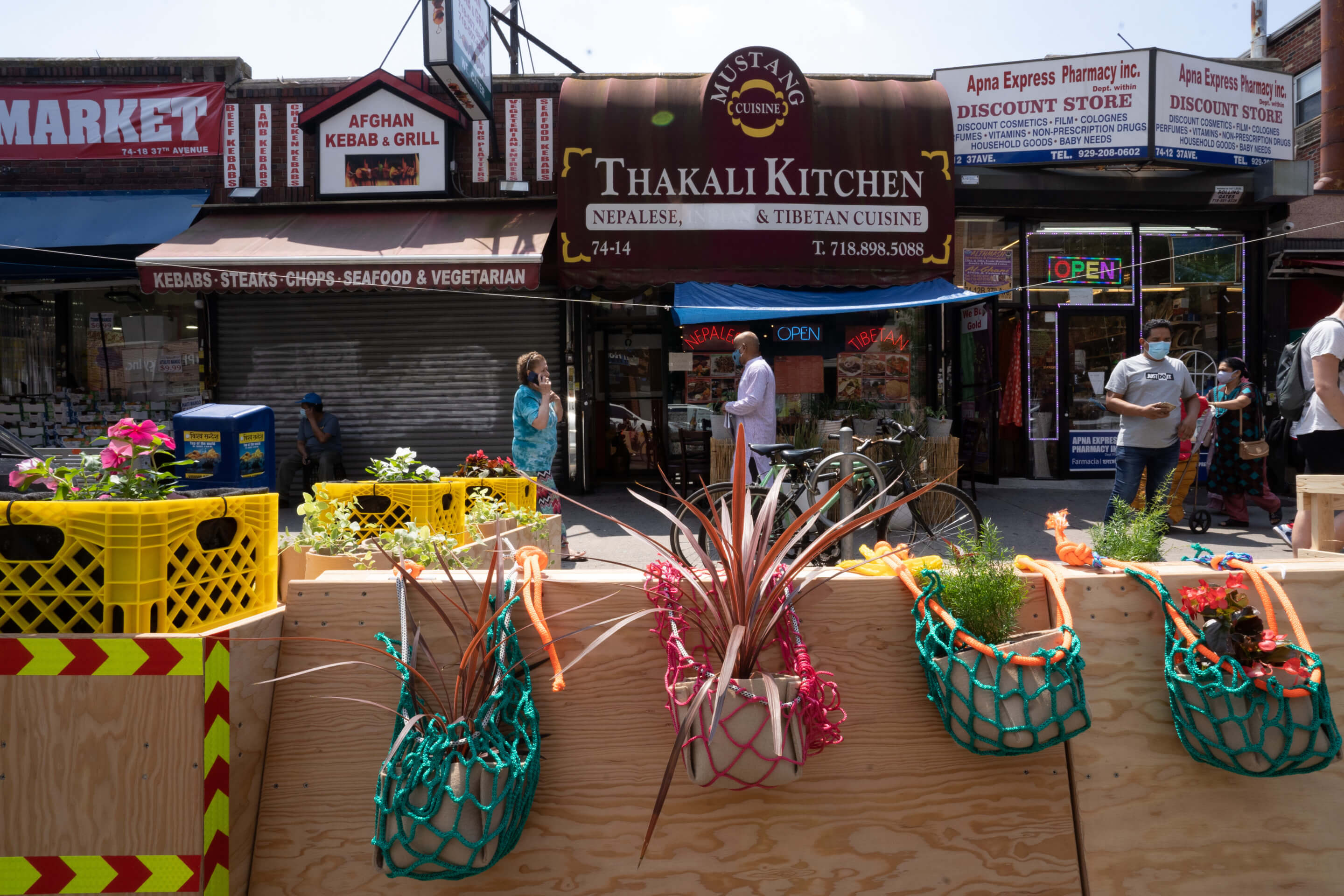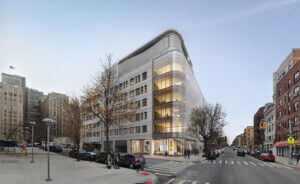Although time can be fuzzy and often befuddling during a global pandemic, a lot can still be accomplished in six weeks when collaboration, creativity, community, and a prevailing sense of urgency are all involved.
Case in point is Neighborhoods Now, a design-driven COVID-19 recovery initiative launched in mid-June by the Van Alen Institute in partnership with the Urban Design Forum. Pairing community organizations with coordinating interdisciplinary design firms to form five dedicated working groups, the initiative was established with the mission to aid in the rebounding and reopening of a quartet of New York City neighborhoods disproportionately impacted—both financially and in terms of mortality rates—by the crisis due to “long-term structural inequality and racism” per the Brooklyn-based Van Alen Institute.
Touching down on everything from outdoor recreational activities to street-side dining to attention-grabbing localized PSA campaigns, the neighborhood-strengthening design recommendations and prototypes generated by each of the five working groups have now, just weeks after the initiative kicked off, been publicly released. In some cases, these strategies have already been implemented in each particular neighborhood. And in addition to the community-specific reopening schemes, the working groups have also produced free, downloadable public resources that extend beyond neighborhood boundaries include legal templates, informational pamphlets, and multilingual social distancing signage designed by the likes of Pentagram, Two Twelve, and Partner & Partners.
According to a new release from the Van Alen Institute, over 200 individuals participated in the initiative over the past six weeks and provided an estimated $1.3 million in in-kind design and consultation services. Leading the charge on the design side were coordinating firms SO-IL, Moody Nolan, Kohn Pedersen Fox (KPF), Arup, and COOKFOX working alongside an impressive roster of supporting firms (Gensler, Woods Bagot, Perkins and Will, Studio Libeskind, nARCHITECTS, and many others among them) and over two dozen expert consultants and representatives from a slew of different city agencies as well as the New York City Economic Development Corporation.
As far as the initial recommendations and prototypes produced by the working groups go, they include “open-air restaurant extensions, flexible retail displays for storefronts and pop-ups, modular street furniture and shading elements to activate underutilized open spaces, and more” as detailed by the Van Alen Institute, which is in the midst of fundraising alongside the Urban Design Forum to enable further implantation of the concepts borne from the working group sessions.

In the wildly culturally diverse (and particularly hard-hit by COVID-19) neighborhood of Jackson Heights, Queens, for example, coordinating firm SO-IL and community partner the 82nd Street Partnership created a currently-in-production Manual of Physical Distancing while also beautifying neighborhood streetscapes through a “Plaint & Pant” event, placing milk crate-based planters in front of individual storefronts, and installing attractive street barriers throughout the neighborhood to boost the appeal of open-air dining. The priorities identified by the working group focused on getting shuttered businesses back up and running, providing assistance to restaurants participating in the Open Restaurants Program, and boosting the aesthetic appeal (and much-needed shading) of the neighborhood’s vibrant, bustling commercial thoroughfares.
“Neighborhoods Now has brought equity to our community by providing direct assistance to the most needy small businesses and free planning services to our organization,” said Leslie Ramos, executive director of the 82nd Street Partnership, in a statement. “Without this initiative, it would have taken us years to do the work accomplished in just a few weeks.”

The Bedford-Stuyvesant section of Brooklyn, a center of Black cultural and economic life in NYC, was the focus of not one but two separate working groups, one partnering the Bed-Stuy Gateway BID with Moody Nolan and the other partnering the Bedford Stuyvesant Restoration Corporation with KPF. The former group focused its efforts on a social distancing-friendly revamping of Marcy Plaza, imagining the space—outfitted with a pop-up playground, outdoor art gallery, seating, and more—as an “actively inclusive plaza which provides a sense of attachment, belonging, and emotional investment for residents.”
The latter Bed-Stuy-focused working group turned its attention to the proposed transformation of Fulton Street into a so-called “connected corridor” that “links slow streets, existing plazas, and repurposed vacant lots and storefront.” Per the working group’s profile page, it is currently sourcing materials for “movable, adaptable furnishings for pop-ups in public spaces and murals to be created in collaboration with RestorationART to showcase history, memorialize loss, and celebrate strength in the neighborhood.”
You can read much more about the output of these three working groups and the two others—the Community League of the Heights/CLOTH with ARUP (Washington Heights, Upper Manhattan) and the Northwest Bronx Community and Clergy Coalition with COOKFOX (Kingsbridge, the Bronx)—at the dedicated Neighborhoods Now program page on the Van Alen Institute website.
On October 6 and 7, the working groups will formally share their completed work and discuss their goals moving forward during a two-part public forum event.











